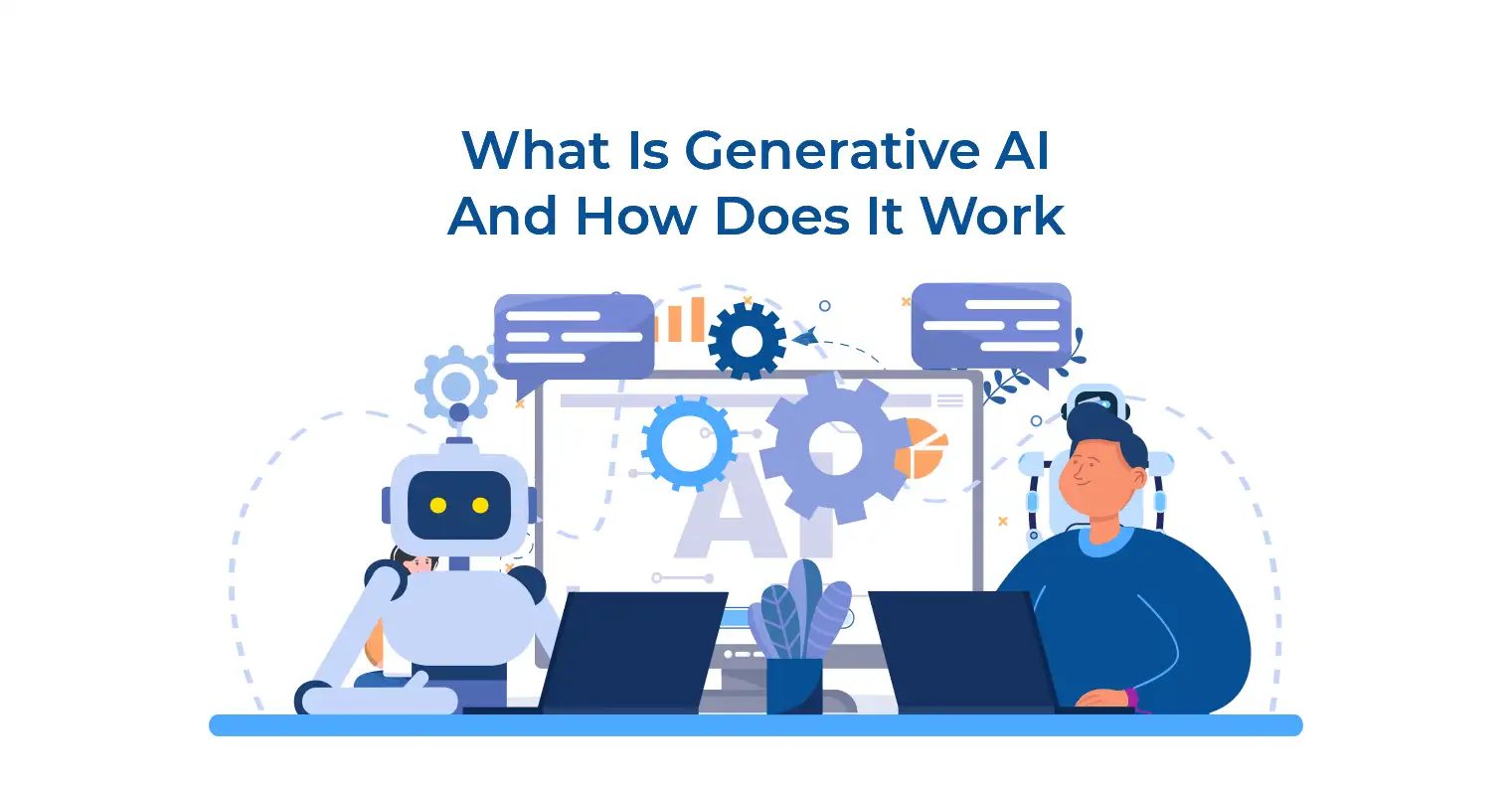 Jothi Kumar
Dec 05, 2024
Jothi Kumar
Dec 05, 2024

Generative AI, an exciting field at the intersection of artificial intelligence and creativity, has revolutionized the way machines generate new content. From images and text to music and more, generative AI enables computers to produce original and realistic outputs.
This blog will explore the concept of generative AI, delve into its inner workings, and answer the question, 'What is generative AI and how does it work?' Join us as we unravel the fascinating world of generative AI and discover its principles, applications, and future implications.
Generative AI focuses on creating machines capable of generating original and realistic content. Understanding ‘what is generative artificial intelligence’ is more important before jumping into its application, so let’s delve into the basic principles and key components that underpin Generative AI systems.
Check out: Top Artificial Intelligence Applications
Generative AI involves a series of processes that enable machines to generate new and realistic content. Let's explore the key steps involved in the functioning of Generative AI systems.
In this stage, large datasets are collected, consisting of images, text, or other relevant data. The collected data is then preprocessed to remove noise, standardize formats, and ensure its quality for training.
Generative models, such as Variational Autoencoders known as VAEs or Generative Adversarial Networks known as GANs, are employed in this phase. The models are trained using the preprocessed data to learn the underlying patterns and structures within them.
Once the generative model is trained, then it can generate new data by sampling from the learned probability distributions. This process involves using random noise or conditioning variables as input to the model, which allows control over the generated output. integrating generative AI and ChatGPT into your career can enhance your data-related tasks, improve data quality, and unlock new possibilities for innovation and decision-making.
Generative AI systems excel at producing realistic images, text, music, and more, by leveraging the patterns and structures learned during the training phase. The generated outputs can range from lifelike images to coherent paragraphs of text, providing immense creative potential and utility in various domains.
Check out: How to build a career in Artificial Intelligence?
Generative AI finds extensive applications across various domains, enabling machines to generate content with remarkable realism and creativity. Let's explore some key areas where Generative AI has made significant contributions.
Generative AI algorithms like Generative Adversarial Networks (GANs) have revolutionized image generation. They can produce realistic images, create new artwork, and even manipulate existing images through techniques like image-to-image translation, style transfer, and super-resolution.
Generative AI models have the ability to generate human-like text, making them invaluable in applications like chatbots, virtual assistants, and content creation. They can also be used for language translation, summarization, and even storytelling, enabling machines to produce coherent and contextually relevant written content.Prompt engineering is an iterative process that involves experimentation and fine-tuning to achieve the desired results. It requires an understanding of the language model's capabilities and limitations and a thoughtful approach to crafting prompts that deliver optimal performance while adhering to ethical considerations and user requirements.
Check out: Why Python is best for Artificial Intelligence?
Generative AI techniques have extended their reach to the realm of music and audio. They can compose new musical pieces in various genres, generate unique melodies, and even harmonize with human input. Moreover, these models can synthesize human-like voices and produce speech, empowering applications like voice assistants and audiobook narration.
The applications of Generative AI extend beyond these three domains, encompassing fields like video synthesis, fashion design, game development, and more. By leveraging Generative AI, industries can enhance creativity, automate content generation, and unlock new possibilities for personalized and immersive experiences. The power of Generative AI lies in its ability to push the boundaries of what machines can create, transforming industries and reshaping the way we interact with technology.
Check out: How to get started as an AI developer?
Generative AI, while powerful and promising, also faces several challenges and limitations that need to be addressed for its widespread adoption. Here are some key considerations:
Addressing these challenges necessitates interdisciplinary efforts involving researchers, policymakers, and industry stakeholders. Striking a balance between innovation and responsible development is crucial to harness the full potential of Generative AI while mitigating its limitations and safeguarding societal well-being.
Check out: Will Artificial Intelligence Take Over Human Jobs by 2030?
In conclusion, Generative AI is a fascinating field with vast potential. By understanding its principles, applications, challenges, and limitations, including 'What Is Generative Ai And How Does It Work', we can harness its power responsibly, shaping a future where machines create realistic and creative content to enhance various industries and human experiences.
Read more: Why Upskill for the Age of Artificial Intelligence?
Here is the list of other major locations where Edoxi offers Artificial Intelligence Course
Artificial Intelligence Course in Dubai | Artificial Intelligence Course in Qatar |

Software and IT Trainer
Jothi is a Microsoft-certified technology specialist with more than 12 years of experience in software development for a broad range of industry applications. She has incomparable prowess in a vast grouping of software development tools like Microsoft Visual Basic, C#, .NET, SQL, XML, HTML, Core Java and Python.
Jothi has a keen eye for UNIX/LINUX-based technologies which form the backbone of all the free and open-source software movement. As a Big data expert, Jothi has experience using several components of the Hadoop ecosystem, including Hadoop Map Reduce, HDFS, HIVE, PIG, and HBase. She is well-versed in the latest technologies of information technology such as Data Analytics, Data Science and Machine Learning.